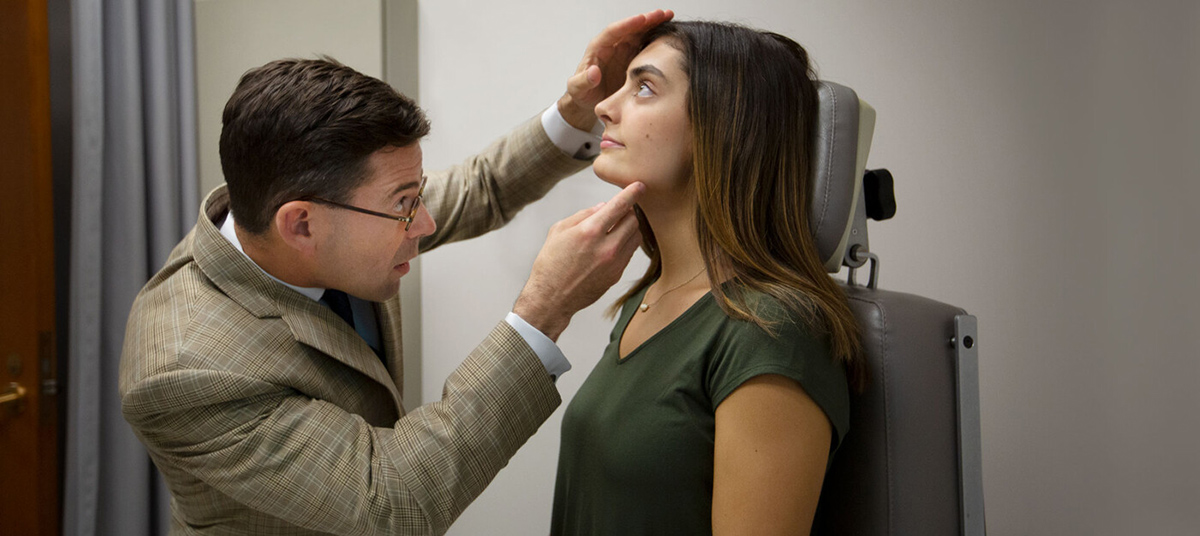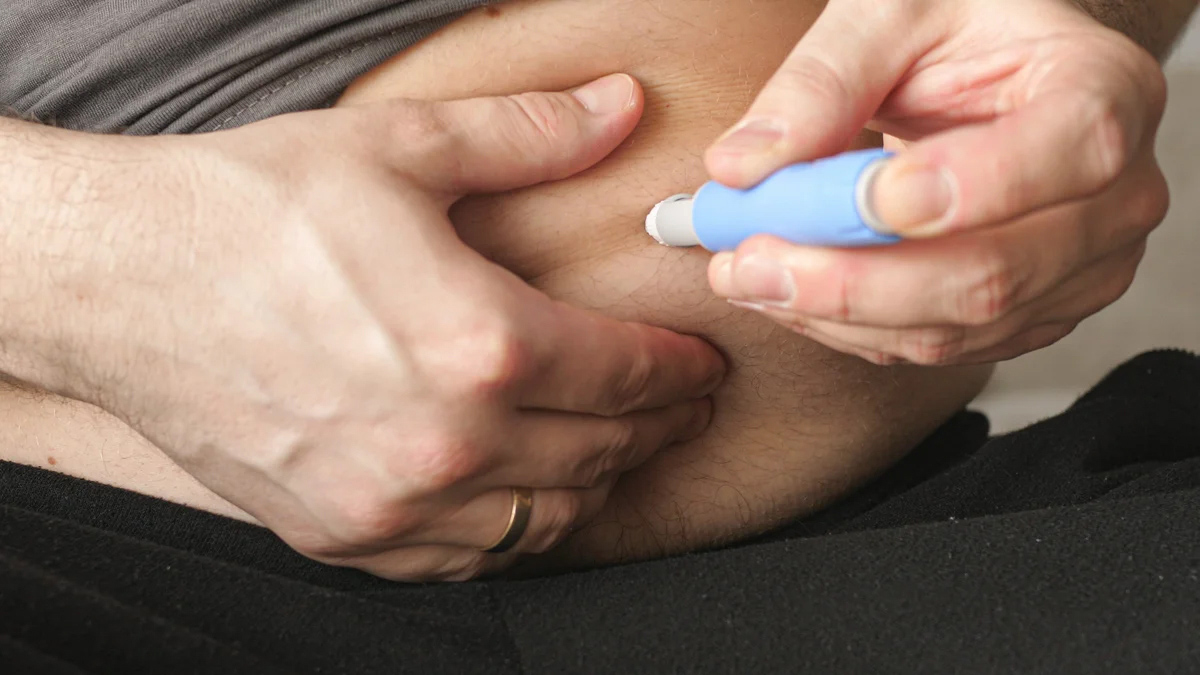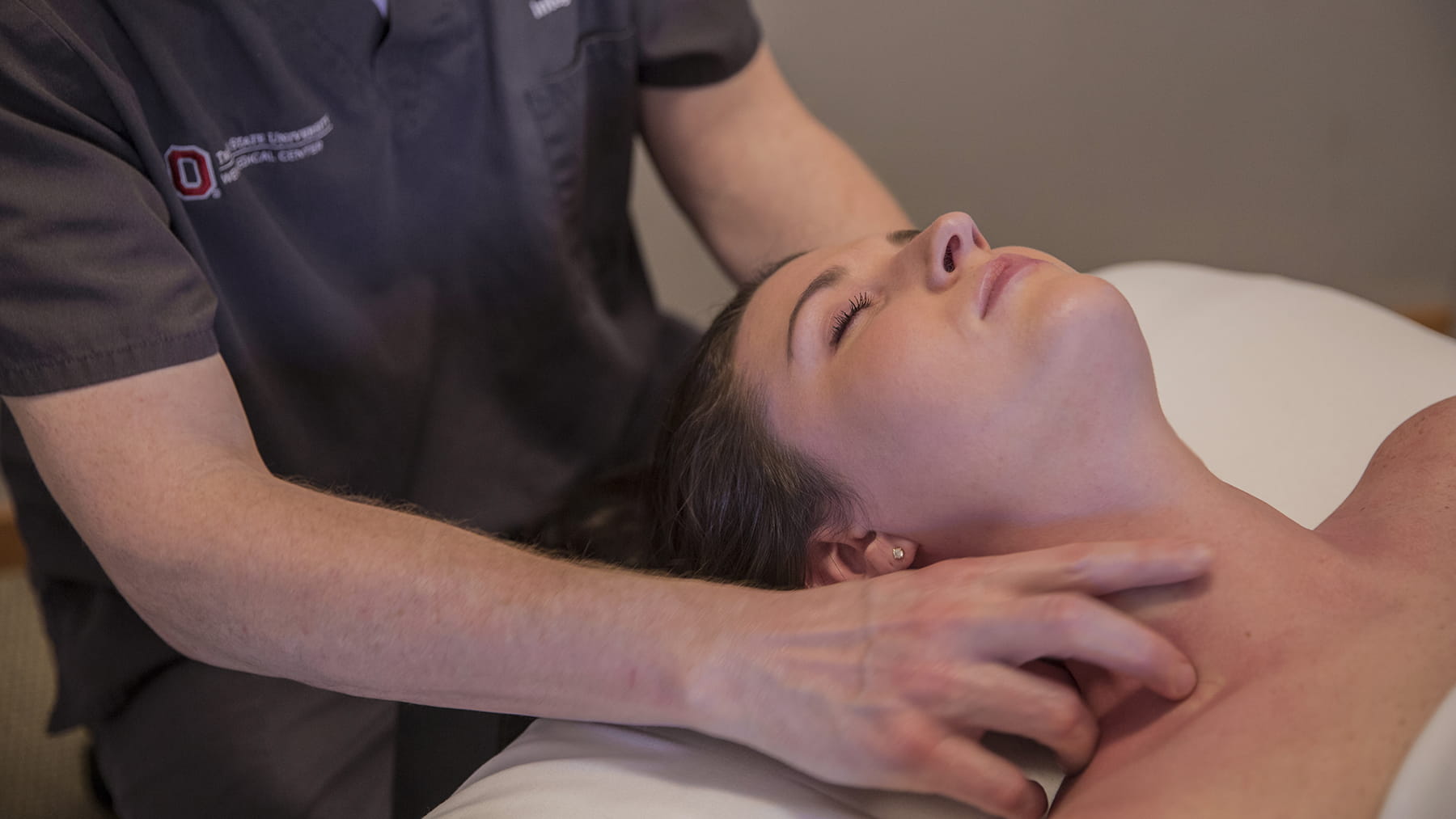

Finance
How To Get Insurance To Pay For A Tummy Tuck
Published: November 8, 2023
Learn how to finance your tummy tuck surgery and get your insurance to cover the costs. Find out the best strategies for getting insurance to pay for your procedure.
(Many of the links in this article redirect to a specific reviewed product. Your purchase of these products through affiliate links helps to generate commission for LiveWell, at no extra cost. Learn more)
Table of Contents
- Introduction
- Understanding Insurance Coverage for Tummy Tucks
- Step 1: Determine if Your Tummy Tuck is Medically Necessary
- Step 2: Review Your Insurance Policy
- Step 3: Consult with Your Plastic Surgeon
- Step 4: Obtain a Referral from Your Primary Care Physician
- Step 5: Document and Communicate Your Symptoms
- Step 6: Appeal and Submit Supporting Documentation
- Step 7: Follow Up with Your Insurance Provider
- Conclusion
Introduction
Welcome to the world of tummy tucks and insurance coverage. If you’ve been considering a tummy tuck procedure but are worried about the cost, you’re not alone. Many people wonder if their insurance will cover the expenses associated with this popular cosmetic surgery. In this article, we will explore the steps you can take to maximize the chances of getting your insurance to pay for a tummy tuck.
A tummy tuck, also known as abdominoplasty, is a surgical procedure that removes excess skin and fat from the abdominal area, tightens the muscles, and creates a smoother and more toned appearance. While it is primarily performed for cosmetic reasons, there are instances where a tummy tuck may be deemed medically necessary.
Insurance coverage for cosmetic procedures like tummy tucks can be challenging to obtain. Insurance companies typically consider these procedures to be elective or aesthetic in nature, and therefore, they may not be covered under your regular health insurance policy. However, there are exceptions to this rule, and it’s essential to understand the criteria and steps you can take to increase your chances of getting coverage.
In the following sections, we will delve deeper into the process of understanding insurance coverage for tummy tucks and provide practical tips to help you navigate the insurance maze. While every insurance policy and situation is unique, these steps will serve as a general guide to assist you in your journey to obtaining coverage for your tummy tuck.
Understanding Insurance Coverage for Tummy Tucks
Before diving into the steps to get insurance to cover your tummy tuck, it’s essential to have a clear understanding of how insurance companies typically approach coverage for cosmetic procedures. In most cases, tummy tucks are considered elective or cosmetic surgeries, which means they are not typically covered by insurance.
Insurance providers view elective procedures as non-essential treatments that are primarily performed for aesthetic purposes rather than medical necessity. However, there are situations where a tummy tuck may be deemed medically necessary and could potentially be covered by insurance.
Understanding these situations can help you determine if you meet the criteria for insurance coverage. Medical necessity for a tummy tuck is generally evaluated based on the presence of significant physical symptoms or functional impairments in the abdominal area.
Common examples of conditions that may make a tummy tuck medically necessary include:
- Excess skin and fat causing chronic rashes or infections
- Abdominal muscle separation resulting in back pain or limited mobility
- Hernias that need repair in conjunction with a tummy tuck
- Significant weight loss that has led to loose, sagging skin and related physical discomfort
If you believe that your tummy tuck meets the medical necessity criteria, it’s important to gather as much supporting evidence as possible. This evidence will play a crucial role in convincing your insurance provider that the procedure is not purely cosmetic but rather a necessary treatment for your health and well-being.
Consulting with a board-certified plastic surgeon experienced in dealing with insurance matters can be beneficial at this stage. They can evaluate your specific situation, document your symptoms and functional impairments, and provide you with the necessary medical documentation to support your case when dealing with your insurance company.
Keep in mind that different insurance companies may have varying guidelines and requirements for considering tummy tucks as medically necessary. Familiarize yourself with the specific policy language and coverage details of your insurance plan to understand what they may require in terms of documentation and evidence.
Now that you have a better understanding of the criteria for medical necessity and know the importance of supporting documentation, let’s move on to the specific steps you can take to increase your chances of getting your insurance to pay for your tummy tuck.
Step 1: Determine if Your Tummy Tuck is Medically Necessary
The first step in getting insurance coverage for a tummy tuck is to determine if your procedure is medically necessary. As mentioned earlier, insurance companies typically consider tummy tucks as elective or cosmetic surgeries and may not cover them under standard health insurance policies. However, certain medical conditions or symptoms may make a tummy tuck medically necessary.
Start by evaluating your symptoms and any functional impairments in your abdominal area. Do you experience chronic rashes or infections due to excess skin and fat? Have you undergone significant weight loss that has resulted in loose, sagging skin causing physical discomfort? Do you have abdominal muscle separation that affects your mobility or causes back pain? These are potential indicators that your tummy tuck may be medically necessary.
It’s important to consult with a board-certified plastic surgeon who can assess your specific situation. They have the expertise and knowledge to evaluate whether your symptoms qualify as medical necessity and can provide documentation to support your case when dealing with your insurance company.
During your consultation, be prepared to discuss your symptoms in detail. Provide your surgeon with a comprehensive medical history as well as any previous treatments you have undergone to address your abdominal concerns. The more information you can provide, the better equipped your surgeon will be to assess the medical necessity of your tummy tuck.
Keep in mind that insurance coverage criteria may vary among different providers. It’s important to familiarize yourself with your insurance policy and understand what specific criteria they have for considering a tummy tuck as medically necessary. This knowledge will help you prepare the necessary documentation and evidence to support your case.
By determining if your tummy tuck meets the medical necessity criteria, you will have a better understanding of your chances of getting insurance coverage. If it is determined that your tummy tuck is indeed medically necessary, you can proceed to the next steps to further increase your likelihood of receiving coverage.
Step 2: Review Your Insurance Policy
Reviewing your insurance policy is a crucial step in the process of getting your insurance to cover a tummy tuck. Understanding the specific coverage details, exclusions, and criteria set by your insurance provider will help you navigate the process more effectively.
Start by obtaining a copy of your insurance policy and carefully read through it. Look for any relevant information regarding coverage for cosmetic procedures, specifically tummy tucks. Pay attention to language relating to medical necessity, pre-authorization requirements, and documentation needed to support your claim.
Some insurance policies may specifically exclude coverage for elective or cosmetic procedures. In such cases, it may be more challenging to get coverage for your tummy tuck. However, if you believe your procedure meets the criteria for medical necessity, don’t be discouraged just yet. Some insurance companies provide exceptions for medically necessary procedures, even if they are typically considered cosmetic.
If you are uncertain about any of the policy terms or have difficulty understanding the language, don’t hesitate to contact your insurance provider directly. They can provide clarification and answer any questions you may have regarding coverage for a tummy tuck.
Additionally, inquire about the process for pre-authorization or prior approval for a tummy tuck procedure. Some insurance companies require pre-approval before any elective surgery, while others may need supporting documentation from your plastic surgeon to assess the medical necessity of the procedure.
By reviewing your insurance policy and understanding the specific coverage details, you will be better prepared to navigate the process and provide the necessary information to support your claim for coverage. This knowledge will also allow you to effectively communicate with your insurance provider and address any potential obstacles along the way.
Step 3: Consult with Your Plastic Surgeon
After determining that your tummy tuck may be medically necessary and reviewing your insurance policy, it’s time to consult with a board-certified plastic surgeon. A plastic surgeon experienced in dealing with insurance matters can provide valuable guidance and assist you throughout the process of obtaining coverage for your tummy tuck.
When choosing a plastic surgeon, it’s important to find someone who has expertise in both performing tummy tucks and navigating insurance claims. Look for a surgeon who has experience dealing with insurance companies and who can provide the necessary documentation and support to strengthen your case for coverage.
During your consultation with the plastic surgeon, be prepared to discuss your symptoms, medical history, and any previous treatments you have undergone for your abdominal concerns. This information will help the surgeon assess the medical necessity of the tummy tuck and determine if you are a suitable candidate.
Make sure to communicate your goals and expectations for the tummy tuck clearly. Your plastic surgeon can help you understand the potential outcomes of the surgery and whether those outcomes align with your desired results.
Your plastic surgeon will also play a crucial role in documenting your symptoms and functional impairments to support your claim for insurance coverage. They will provide medical records, photographs, and any other necessary evidence to substantiate the medical necessity of the tummy tuck procedure.
Additionally, your plastic surgeon can guide you through the process of obtaining pre-authorization from your insurance company. They can assist in completing the required forms, submitting the necessary documentation, and communicating with the insurance company on your behalf.
A thorough consultation with a plastic surgeon who specializes in tummy tucks and has expertise in dealing with insurance matters will help you navigate the complexities of the insurance process. Their knowledge and guidance will increase your chances of obtaining coverage for your tummy tuck procedure.
Step 4: Obtain a Referral from Your Primary Care Physician
As you continue your journey to get insurance coverage for your tummy tuck, it’s important to involve your primary care physician in the process. Obtaining a referral from your primary care physician can strengthen your case for medical necessity and increase the likelihood of getting your insurance to pay for the procedure.
Your primary care physician is familiar with your medical history and can provide valuable insights into your overall health condition. They can evaluate your symptoms, review previous treatments, and assess the impact of your abdominal concerns on your daily life and well-being.
When discussing your desire for a tummy tuck with your primary care physician, be open and honest about your motivations and any physical and emotional discomfort you may be experiencing. Explain how your abdominal condition affects your quality of life and express the potential benefits you expect from the procedure.
Your primary care physician can document your symptoms and functional impairments in your medical records. This documentation serves as important evidence to support the medical necessity of the tummy tuck when communicating with your insurance provider.
Additionally, your primary care physician may be required to provide a formal referral for the tummy tuck procedure. Insurance companies often require a referral from a primary care physician as part of the pre-authorization process.
Having your primary care physician on board not only strengthens your case but also ensures that all aspects of your health are taken into consideration. Your primary care physician can collaborate with your plastic surgeon in evaluating your candidacy for the procedure and provide any necessary medical information or additional documentation needed to support your claim for insurance coverage.
Obtaining a referral from your primary care physician demonstrates that you have sought appropriate medical advice and have explored non-surgical options before considering a tummy tuck. This further reinforces the medical necessity of the procedure in the eyes of your insurance provider.
By involving your primary care physician and obtaining their referral, you are taking an important step in the process of getting insurance coverage for your tummy tuck. Their expertise and support will play a significant role in strengthening your case and advocating for your desired outcome.
Step 5: Document and Communicate Your Symptoms
Properly documenting and effectively communicating your symptoms is crucial when seeking insurance coverage for a tummy tuck. Clear and detailed information about your symptoms will help substantiate the medical necessity of the procedure to your insurance provider.
Start by keeping a record of your symptoms related to your abdominal concerns. Note any physical discomfort, such as chronic rashes, infections, or pain. Pay attention to how these symptoms impact your daily life, including limitations in mobility, negative effects on body image and self-esteem, and any emotional distress they may cause.
It’s also important to document any previous treatments or interventions you have tried to address your symptoms. This could include medications, therapies, or non-invasive procedures. Include the details of these treatments in your records, along with any results or lack thereof.
Photographs can be valuable evidence to support your claim for medical necessity. Take clear and detailed photos of your abdominal area from different angles, highlighting the excess skin, fat, muscle separation, or any other physical irregularities. Label and date your photos for easy reference.
When communicating with your insurance provider, be prepared to articulate your symptoms and their impact on your daily life. Explain how your abdominal concerns affect your physical well-being, such as hindering your ability to engage in certain activities or causing discomfort that interferes with your quality of life.
Use clear and precise language to describe your symptoms, and avoid minimizing or exaggerating them. Stick to the facts and be specific about the duration, frequency, and intensity of your symptoms. The more detailed and accurate your description, the stronger your case for medical necessity.
It’s also essential to maintain an open line of communication between yourself, your plastic surgeon, your primary care physician, and your insurance provider. Keep all parties informed about your symptoms, any changes or developments, and the treatments you have pursued. This ensures that everyone is on the same page and can provide necessary support and documentation as needed.
By documenting and effectively communicating your symptoms, you provide the crucial evidence needed to support the medical necessity of your tummy tuck. This information will be essential when submitting your claim for insurance coverage and in any potential appeals or discussions with your insurance provider.
Step 6: Appeal and Submit Supporting Documentation
If your initial claim for insurance coverage for a tummy tuck is denied, don’t lose hope. You have the option to appeal the decision and provide additional supporting documentation to strengthen your case.
Start by carefully reviewing the denial letter from your insurance provider. Understand the specific reasons for denial and the documentation or information they may require to reconsider your claim. This will guide you in gathering the necessary supporting evidence for your appeal.
Consult with your plastic surgeon and primary care physician to obtain any additional medical records, test results, or expert opinions that may support the medical necessity of the tummy tuck procedure. These records should clearly document your symptoms, any functional impairments, and the failed attempts at conservative treatments.
Compile all the necessary documentation in an organized manner, making sure to include medical reports, imaging results, photographs, referral letters, and any correspondence with your insurance provider. Ensure that all documentation is accurate, up-to-date, and clearly supports your case for medical necessity.
Write a well-crafted appeal letter addressing the specific reasons for denial and providing a thorough explanation of why the tummy tuck is medically necessary for your condition. Make a compelling argument, supported by the evidence you have gathered, to demonstrate that the procedure is essential to alleviate your symptoms, improve your quality of life, and prevent further complications.
Follow the instructions provided by your insurance provider regarding the submission of the appeal and supporting documentation. Pay close attention to any deadlines and make multiple copies of the documents for your own records.
Consider seeking the guidance of a healthcare advocate or legal expert specializing in insurance appeals if you encounter difficulties during the process. They can provide valuable advice and support in navigating the complexities of the appeals process and ensuring that your rights are protected.
Continue to communicate with your insurance provider and stay persistent in your efforts to secure coverage for your tummy tuck. Follow up regularly to check the status of your appeal and provide any additional information that may be requested.
Remember, the appeals process can take time, and success is not guaranteed. However, by submitting compelling supporting documentation and making a strong case for medical necessity, you increase your chances of overturning the initial denial and obtaining the coverage you need for your tummy tuck procedure.
Step 7: Follow Up with Your Insurance Provider
Following up with your insurance provider is a crucial step in the process of getting insurance coverage for your tummy tuck. It ensures that your claim is being actively reviewed and allows you to address any concerns or provide additional information as needed.
After submitting your appeal and supporting documentation, it’s important to maintain regular communication with your insurance provider. Keep a record of all interactions, including the dates, names of representatives you speak with, and a summary of the conversation.
Start by confirming receipt of your appeal and supporting documents. Ensure that all necessary information has been received and is being reviewed by the appropriate department. If there are any missing or incomplete documents, promptly provide them to avoid any delays in the review process.
Ask for an estimated timeline for when you can expect a response regarding your appeal. This will help manage your expectations and allow you to plan accordingly. Be aware that the review process may take some time, so patience is key.
If there is a delay or if you have not received a response within the specified timeframe, do not hesitate to follow up with your insurance provider. Politely inquire about the status of your appeal and ask for any updates or additional information they may need from you. By staying engaged in the process, you demonstrate your commitment and persistence in seeking coverage for your tummy tuck.
During your follow-up conversations, ask for clarification on any points that may be unclear or require further explanation. Seek guidance on any additional steps you can take to support your claim. Remember to remain calm and professional, even if you may feel frustrated or discouraged.
Continue to communicate regularly with your plastic surgeon and primary care physician, keeping them informed of any updates or conversations with your insurance provider. They may be able to provide additional insight or documentation to address any specific concerns raised by the insurance company.
While it can be challenging to navigate the complexities of dealing with insurance providers, staying proactive and following up regularly can increase your chances of a favorable outcome. Persistently advocate for your case, provide any requested information promptly, and maintain open lines of communication throughout the process.
By staying vigilant and engaged, you demonstrate your commitment and determination to receive the insurance coverage you deserve for your tummy tuck procedure.
Conclusion
Obtaining insurance coverage for a tummy tuck can be a complex and challenging process, but it is not impossible. By following the steps outlined in this article, you can increase your chances of getting your insurance provider to pay for the procedure.
Begin by determining if your tummy tuck meets the criteria for medical necessity and review your insurance policy for any specific coverage details or exclusions. Consult with a board-certified plastic surgeon experienced in dealing with insurance matters to assess your situation and provide the necessary documentation.
Obtain a referral from your primary care physician to further strengthen your case, and make sure to document and communicate your symptoms effectively. This includes keeping records of your symptoms, previous treatments, and any supporting evidence such as photographs.
If your initial claim is denied, don’t give up. Proceed to appeal the decision and submit additional supporting documentation. Craft a strong appeal letter addressing the reasons for denial, and consider seeking guidance from experts if needed.
Throughout the process, follow up regularly with your insurance provider to ensure the progress of your claim and address any concerns or requests for information. Stay proactive and persistent in advocating for your case.
Keep in mind that every insurance policy and situation is unique, and success in obtaining coverage cannot be guaranteed. However, by diligently following these steps and being well-prepared, you maximize your chances of getting insurance to pay for your tummy tuck.
Remember to remain patient, as the process may take time. Stay positive and focused on your goals, and continue to consult with your plastic surgeon and primary care physician for guidance and support.
In the end, obtaining insurance coverage for your tummy tuck can provide financial relief and enable you to undergo the procedure that can improve your physical well-being and boost your confidence. With perseverance and the right approach, you can navigate the insurance maze and achieve your desired outcome.














